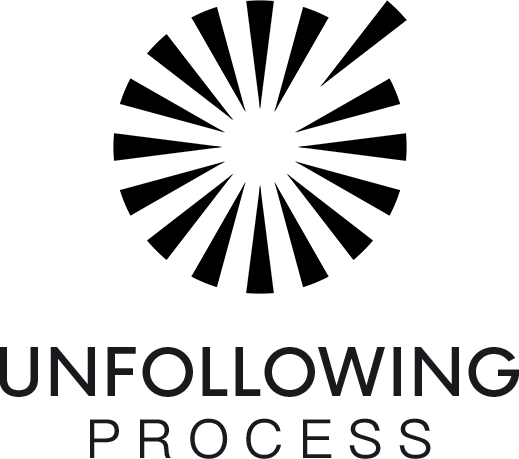
The Voices We Carry Home
How a new approach to inner dialogue is changing the way Parts Therapy, IFS Therapy, and Coaches think about lasting change
The breakthrough happened on a Tuesday afternoon in November. Dr. Leah Morrison had been working with her client—let's call him James—for three months, circling around the same stubborn pattern.
A marketing executive in his forties, James would arrive each week describing the same scenario: “I have so many amazing realizations in our therapy sessions, but then when I step out of your office everything seems to reverse back to the way it’s been.” It was as if the fifty minutes they spent together existed in a parallel universe, one that bore no relation to the conference rooms and dinner tables where his actual existence unfolded.
That Tuesday, something shifted. James was describing his latest workplace conflict—another clash with a colleague over creative direction—when Morrison noticed his posture change. His shoulders, which had been hunched forward in their familiar defensive stance, suddenly dropped. The tight line of his jaw softened. He looked up at her with what she would later describe as "the expression of someone who had just discovered they'd been holding their breath for years."
"I think," he said slowly, "I think I know who's been running this show."
Morrison had introduced the concept of "parts" several sessions earlier—the idea that we all carry multiple voices or aspects within ourselves, each with its own agenda and protective or creative function. But this was the first time James seemed to truly inhabit the understanding. He wasn't just intellectually grasping the theory; he was feeling the distinct presence of what he came to call “Jimmy, The Defensive”—the part of him that had learned, somewhere in childhood, that the best offense was a good defense.
The session ended with James looking more relaxed than Morrison had ever seen him. But she'd been doing this work long enough to know what would likely happen next. The following week, he would return to her office, and the insights would have evaporated like morning mist. The old patterns would be back in full force, and they would begin again.
This time, though, Morrison tried something different. She reached into her desk drawer and pulled out a box filled with elegant cards, a journal, and a guidebook. She slid them across the coffee table between them.
"This," she said, "is how you take our work home."
Why Parts Therapy and IFS Therapy Struggle to Travel Beyond the Session
The system Morrison handed to James that day represent something of a quiet revolution in the world of therapy and coaching. Called "Parts Play," the system is part of a broader movement that recognizes a fundamental limitation in traditional therapeutic approaches: the gap between insight and implementation, between the safety of the therapy room and the chaos of real life.
The concept of working with "parts" isn't new. Internal Family Systems (IFS), developed by Richard Schwartz in the 1980s, has long been used by therapists to help clients understand and work with different aspects of themselves. Parts therapy, voice dialogue, and similar approaches have helped countless people recognize the various internal voices that drive their behavior—The Jealous, The Skeptic, The Rebel, the Caregiver, The Addict.
But there's always been a problem with this work: it tends to stay in the room where it began. Clients leave with profound insights about their inner landscape, only to find themselves, days later, wondering why they can't access those same revelations when they're actually needed—in the middle of a difficult conversation with their spouse, or standing in their boss's office explaining results.
Parts Play attempts to bridge that gap by giving people a tangible, portable way to work with their parts in real time. Rather than simply talking about different aspects of themselves, clients can literally see their inner crew laid out before them, each part represented by a card with its own distinctive design and description. They organize and understand their "Crew" and balance when they feel their "Anxious” part taking over. They can consciously choose to lead with their "True Nature" instead of defaulting to their "Manipulator."
It sounds almost too simple to be effective. But in the year since Morrison began using Parts Play with her clients, she has watched something remarkable happen: the work has begun to travel. And expand.

Daniel Reeves, an executive coach in San Francisco, was initially skeptical. After fifteen years of working with high-achieving clients—CEOs, entrepreneurs, senior executives—he had seen plenty of tools and techniques come and go. Most promised transformation but delivered little more than temporary insights that faded as soon as his clients returned to the pressure cooker of their professional lives.
But he was intrigued by the core premise of Parts Play: that lasting change requires not just understanding our internal patterns, but developing the ability to consciously choose which part of ourselves leads in any given moment.
He decided to try it with Maria, a startup founder who had been struggling with delegation. Brilliant and driven, Maria had built her company through sheer force of will, but her inability to let go of control was now threatening to strangle the very growth she had worked so hard to achieve.
In their sessions, Maria could clearly articulate the problem. She understood intellectually that her "Controller" crew member was trying to protect her from the vulnerability of depending on others. She could see how this same crew member had served her well in the early days of her company but was now creating bottlenecks and burning out her team. Yet week after week, she would return to Reeves's office with stories of micromanaging her employees and taking on work that should have been delegated.
Then Reeves introduced Parts Play. Instead of just talking about Maria's Controller, they gave it a name and physical form—a card she could hold, examine, and consciously set aside. She carried it with her and would put it on her desk as a reminder. They worked together to identify her "Visionary" and her "Collaborator," parts of herself that could lead when the Controller stepped back. Most importantly, they practiced the transition between these parts, not just in the abstract, but in her body, with her hands, with visual and tactile cues that her nervous system could remember.
The real test came during a coaching session conducted over video call. Maria was in the middle of describing a situation with her head of marketing when Reeves watched her posture change. Her jaw tightened. Her voice took on an edge. He could practically see her Controller part jumping into the driver's seat.
"Maria," he said quietly. "Who's leading right now?"
She paused, her hand instinctively moving toward the small collection of Parts Play cards she kept on her desk. She picked up the Controller card, held it for a moment, then set it aside and reached for the Collaborator.
"Not anymore," she said, and Reeves could hear the shift in her voice immediately. They finished the conversation with Maria mapping out a plan to have a genuine collaborative discussion with her marketing director, rather than simply dictating orders from her Controller part.
Two weeks later, Maria reported that the conversation had gone better than any delegation attempt she had made in months. More importantly, she was beginning to notice her Controller part in real time, not just in retrospect, thanks to a practice they did together called, “Liquid Cooling.” She could slow enough to feel it stepping forward in meetings, recognize its familiar tension in her shoulders, and make a conscious choice about whether to let it lead or invite another part to take the wheel.
Solving the “Transfer Problem” in IFS Therapy and Parts Therapy
The power of Parts Play lies not in its novelty—the basic insights about internal multiplicity have been around for centuries—but in its recognition of a fundamental truth about human behavior: lasting change happens not through insight alone, but through embodied practice in the moments when it matters most.
Traditional therapy and coaching, for all their value, suffer from what researchers call the "transfer problem"—the difficulty of applying insights gained in one context (the therapy room) to another context (real life). This isn't a failure of traditional approaches; it's simply an acknowledgment of their limitations vs experiential learning. Talking about riding a bicycle is not the same as riding one. Understanding your patterns is not the same as changing them in the moment they arise.
Parts Play works because it gives people a way to practice the skills they're developing in therapy or coaching when they're actually needed. It doesn't replace the professional relationship; it extends it. It gives therapists and coaches a way to be present in their clients' everyday lives, not through their physical presence, but through the embodied skills and practices they've developed together.
For therapists, this represents a significant shift. Rather than being the sole agent of change, they become coaches in a practice that clients can take home. The therapeutic alliance—that crucial relationship between therapist and client—doesn't end when the session ends; it lives on in the client's relationship with their own parts.
Morrison has watched this play out in her practice repeatedly. Clients who once arrived at sessions feeling defeated by their inability to maintain progress between appointments now come in with stories of real-time shifts. They describe moments when they felt their Self-Critic taking over and consciously chose to let their Curious lead instead. They talk about noticing their Pleaser part in the middle of a difficult conversation and finding the courage to let their Advocate speak up.
"It's not that they don't still struggle," Morrison explains. "But they're struggling consciously now, with awareness and choice rather than just being at the mercy of whatever part happens to grab the wheel. Having a physical product like Space helps make the invisible visible.”
The implications extend beyond individual client work. In a field increasingly focused on measurement and outcomes, Parts Play offers something that has long been elusive: a way to bridge the gap between therapeutic insight and behavioral change. Clients don't just understand their patterns differently; they develop the capacity to interrupt and redirect them in real time.
This is particularly significant for coaches, who often work with high-functioning clients whose primary challenge isn't gaining insights but implementing them under pressure. The executive who knows they need to be more collaborative but defaults to command-and-control mode when stakes are high. The entrepreneur who understands the importance of self-care but abandons it the moment their business faces a challenge. These clients don't need more insights; they need more practice with conscious choice-making in the moments when their habitual patterns want to take over.
Parts Play provides that practice. It turns the space between sessions from a void where progress gets lost into a laboratory where skills get strengthened. Clients develop what might be called "meta-leadership"—not just the ability to lead others in the outer world, but the ability to lead their own internal world with consciousness and intention.
A Future for Parts Therapy and IFS Therapy That Reaches Everyday Life
On a recent Thursday morning, James—Morrison's client who first encountered Parts Play on that transformative Tuesday—found himself in exactly the kind of situation that would have triggered his old patterns. A colleague had challenged his ideas in a team meeting, and he could feel his Defensive part surging forward with all its familiar strategies: dismiss the challenge, counterattack, prove superiority.
But this time, something different happened. Instead of being hijacked by the Defensive's agenda, James Liquid Cooled and felt himself slow and pause. He could sense the part's presence—the tension in his chest, the words forming in his throat—but he wasn't consumed by it. It was as if he were watching the Defensive from a distance, acknowledging its protective intent without being compelled to act on its directives.
In that pause, James made a choice. He let his Student part take the lead instead. Rather than defending his position, he found himself asking questions: "Tell me more about your concerns. What are you seeing that I might be missing?"
The conversation that followed was unlike any professional interaction James could remember. Ideas flowed back and forth. Building happened instead of battling. By the end of the meeting, they had developed a solution neither of them could have conceived alone.
Later that day, James texed Morrison to share the story. "I could actually feel the handoff," he told her. "Like I was consciously choosing which part of me got to drive. It wasn't just an idea anymore—it was something I could do."
This, perhaps, is the real promise of Parts Play: not just better self-understanding, but genuine self-leadership. The ability to meet life's complexity not with rigid patterns learned in childhood, but with the full range of our capacity, consciously accessed and skillfully deployed.
It's a small thing, perhaps—a deck of cards and a new way of thinking about the voices in our heads. But for therapists and coaches who have long wrestled with the transfer problem, who have watched brilliant insights evaporate in the harsh light of everyday life, it represents something more significant: a way to help people become the authors of their own experience, one conscious choice at a time.
The work, as Morrison likes to say, finally travels. And in traveling, it transforms not just understanding, but living itself.



Leave a comment
This site is protected by hCaptcha and the hCaptcha Privacy Policy and Terms of Service apply.